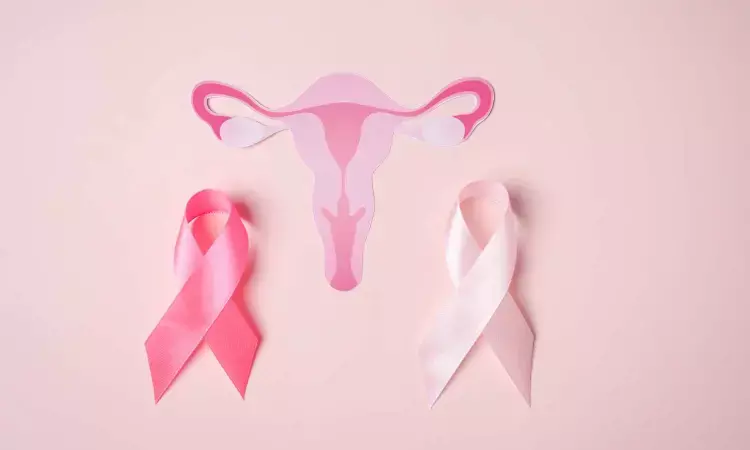- Home
- Medical news & Guidelines
- Anesthesiology
- Cardiology and CTVS
- Critical Care
- Dentistry
- Dermatology
- Diabetes and Endocrinology
- ENT
- Gastroenterology
- Medicine
- Nephrology
- Neurology
- Obstretics-Gynaecology
- Oncology
- Ophthalmology
- Orthopaedics
- Pediatrics-Neonatology
- Psychiatry
- Pulmonology
- Radiology
- Surgery
- Urology
- Laboratory Medicine
- Diet
- Nursing
- Paramedical
- Physiotherapy
- Health news
- Fact Check
- Bone Health Fact Check
- Brain Health Fact Check
- Cancer Related Fact Check
- Child Care Fact Check
- Dental and oral health fact check
- Diabetes and metabolic health fact check
- Diet and Nutrition Fact Check
- Eye and ENT Care Fact Check
- Fitness fact check
- Gut health fact check
- Heart health fact check
- Kidney health fact check
- Medical education fact check
- Men's health fact check
- Respiratory fact check
- Skin and hair care fact check
- Vaccine and Immunization fact check
- Women's health fact check
- AYUSH
- State News
- Andaman and Nicobar Islands
- Andhra Pradesh
- Arunachal Pradesh
- Assam
- Bihar
- Chandigarh
- Chattisgarh
- Dadra and Nagar Haveli
- Daman and Diu
- Delhi
- Goa
- Gujarat
- Haryana
- Himachal Pradesh
- Jammu & Kashmir
- Jharkhand
- Karnataka
- Kerala
- Ladakh
- Lakshadweep
- Madhya Pradesh
- Maharashtra
- Manipur
- Meghalaya
- Mizoram
- Nagaland
- Odisha
- Puducherry
- Punjab
- Rajasthan
- Sikkim
- Tamil Nadu
- Telangana
- Tripura
- Uttar Pradesh
- Uttrakhand
- West Bengal
- Medical Education
- Industry
Bilateral salpingectomy for ovarian cancer prevention safe and feasible method: JAMA

Most ovarian cancers originate in the fimbriated end of the fallopian tube. This has led to the hypothesis that surgical resection of the fallopian tubes at the time of gynecologic and nongynecologic surgical procedures—referred to as an opportunistic salpingectomy—may prevent the development of epithelial ovarian cancer for women at an average risk of developing the disease.
To compile a comprehensive, state-of-the-science review examining the current landscape of performing bilateral salpingectomy for ovarian cancer prevention,a systematic review of the literature was performed on March 4, 2022, to identify studies examining salpingectomy for ovarian cancer prevention. This review was performed according to the Preferred Reporting Items for Systematic Reviews and Meta-analyses (PRISMA) 2020 statement. Four databases were selected: PubMed via the National Library of Medicine’s PubMed.gov, Embase via Elsevier’s Embase.com, Cochrane Central Register of Controlled Trials (CENTRAL) via Wiley’s Cochrane Library, and Northern Light Life Sciences Conference Abstracts via Ovid. A total of 20 gray literature sources, including 1 database, 2 registers, 1 repository, 1 index, 1 archive, 1 preprint server, 1 agency, and 12 organizations, were also searched.
The initial search produced 1089 results; a total of 158 publications were included in the final review. Salpingectomy has been associated with ovarian cancer risk reduction of approximately 80%. Studies have demonstrated that salpingectomy was safe, cost-effective, and was not associated with an earlier age of menopause onset. With widespread implementation, salpingectomy has the potential to reduce ovarian cancer mortality in the US by an estimated 15%. Both physician and patient awareness regarding the adnexa as the origin for most ovarian cancers, as well as the existence of salpingectomy and its potential benefits in reducing ovarian cancer risk, has increased during the past decade. Raising awareness and developing effective implementation strategies are essential.
The results of this systematic review suggest that bilateral salpingectomy for ovarian cancer prevention was safe and feasible and has the potential to be a cost-effective and cost-saving strategy across the population. Prospective studies to demonstrate long-term survival outcomes and feasibility in nongynecologic surgical procedures are warranted.
Source: Kahn RM, Gordhandas S, Godwin K, et al. Salpingectomy for the Primary Prevention of Ovarian Cancer: A Systematic Review. JAMA Surg. Published online September 06, 2023. doi:10.1001/jamasurg.2023.4164
MBBS, MD Obstetrics and Gynecology
Dr Nirali Kapoor has completed her MBBS from GMC Jamnagar and MD Obstetrics and Gynecology from AIIMS Rishikesh. She underwent training in trauma/emergency medicine non academic residency in AIIMS Delhi for an year after her MBBS. Post her MD, she has joined in a Multispeciality hospital in Amritsar. She is actively involved in cases concerning fetal medicine, infertility and minimal invasive procedures as well as research activities involved around the fields of interest.
Dr Kamal Kant Kohli-MBBS, DTCD- a chest specialist with more than 30 years of practice and a flair for writing clinical articles, Dr Kamal Kant Kohli joined Medical Dialogues as a Chief Editor of Medical News. Besides writing articles, as an editor, he proofreads and verifies all the medical content published on Medical Dialogues including those coming from journals, studies,medical conferences,guidelines etc. Email: drkohli@medicaldialogues.in. Contact no. 011-43720751


